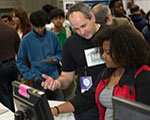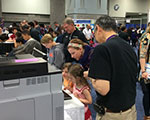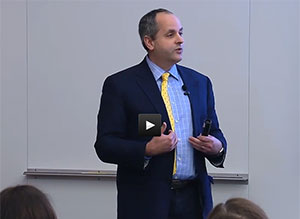NIH is requesting input from the community on scientific opportunities, critical needs and strategies for realizing the scientific potential of cryo-electron microscopy (cryo-EM). The request for information (RFI) seeks input from researchers, institutions, professional societies and others interested in cryo-EM, including those who have not done any work in the area but have an interest in doing so in the future.
The RFI solicits input on a number of topics, including but not limited to:
- Cryo-EM needs and capacity.
- Workforce development and training.
- Technology development.
RFI responses should be sent to cyro-em@mail.nih.gov by August 8, 2016.
If you have any questions about the RFI, please let me know.


 I’m very pleased to announce the selection of Rochelle Long as director of our
I’m very pleased to announce the selection of Rochelle Long as director of our 
 A few weeks ago, 23 NIGMS volunteers and I spent an amazing day with thousands of highly engaged kids, their parents and other science enthusiasts of all ages at the Washington, DC, Convention Center. We were participating in the USA Science & Engineering Festival, the largest STEM event in the nation.
A few weeks ago, 23 NIGMS volunteers and I spent an amazing day with thousands of highly engaged kids, their parents and other science enthusiasts of all ages at the Washington, DC, Convention Center. We were participating in the USA Science & Engineering Festival, the largest STEM event in the nation.
 I encourage you to share your own enthusiasm for science with young people whenever you have the opportunity. Whether you judge a science fair, speak at a career day or have students visit your lab, you put a human face on science and help students see it as an exciting, fulfilling and worthy career choice.
I encourage you to share your own enthusiasm for science with young people whenever you have the opportunity. Whether you judge a science fair, speak at a career day or have students visit your lab, you put a human face on science and help students see it as an exciting, fulfilling and worthy career choice. Helen Sunshine, who led the NIGMS Office of Scientific Review (OSR) for the last 27 years, retired in April. Throughout her career, she worked tirelessly to uphold the highest standards of peer review.
Helen Sunshine, who led the NIGMS Office of Scientific Review (OSR) for the last 27 years, retired in April. Throughout her career, she worked tirelessly to uphold the highest standards of peer review.